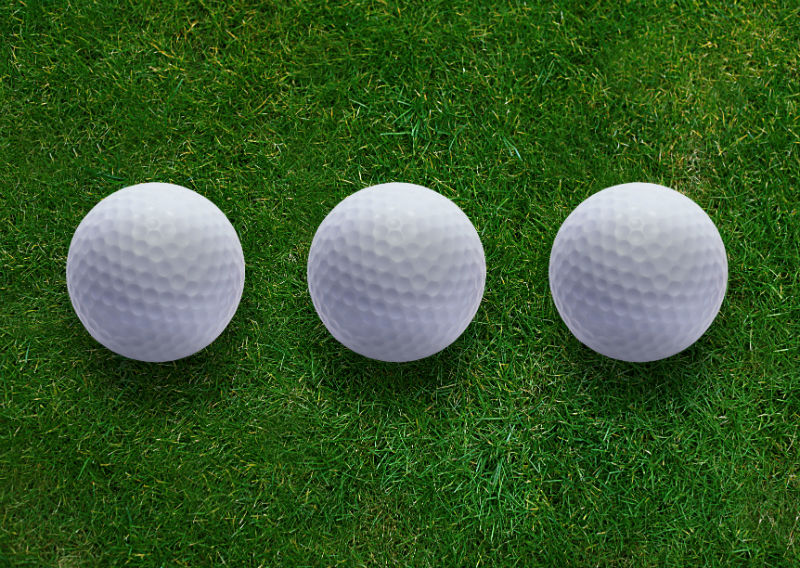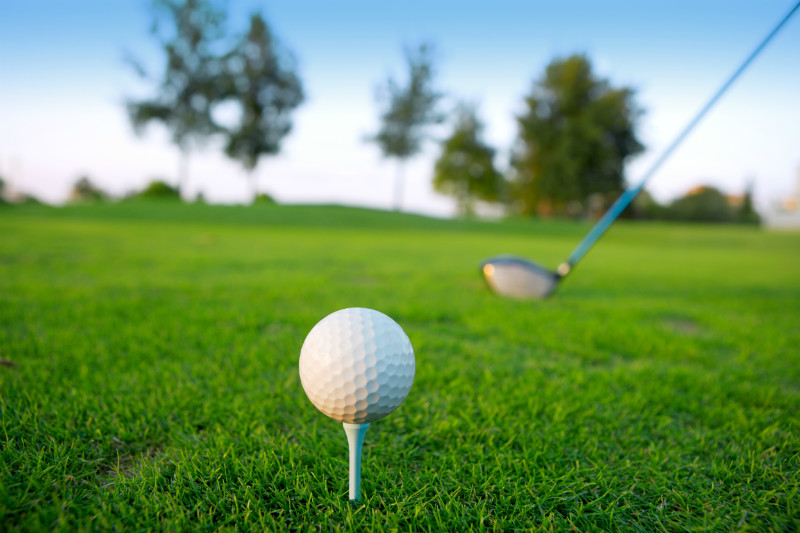The compression of the golf ball is somewhat of a contentious topic when it comes to choosing a golf ball. There have been many discussions about how your swing speed affects low-compression vs. high-compression golf balls.
No matter how many golf ball compression charts or golf ball compression ratings are provided, there really isn’t any consensus as to which compression is best. It can be challenging to sort through the information because it is such a jumble of statistics, figures, and viewpoints.
We’re here to give you the facts in an understandable manner. Once you are fully informed, you can decide whether or not golf ball compression and swing speed are significant factors for you.
What Is Golf Ball Compression?
Compression refers to how much the ball compresses against the face of your club when the ball is hit. Most balls fit into three categories: low, medium, and high. These balls need different swing speeds to compress the ball at impact. A low compression ball will need a lower swing speed and so on. With increased compression can come higher ball speeds. So, it would make sense that a lower compression ball will give you more speed and are the obvious choices, right? Well, it is not quite that simple.
What Comes With High Speed?
The ball will travel with a lot of speed if you hit it forcefully and compress it as it leaves the club. High spin rates are produced as well as distance at this speed. Your precision can be compromised by high spin rates. You need both accuracy and distance when playing golf. What is the solution, then?

Distance and Spin
When most golfers come across compression for the very first time, they are often focused only on the distance it will give them. More compression means more speed and more distance, but they fail to realize that the spin is also important in the distance. A shot with a lot of spin can travel higher into the air. Backspin provides your shot with a lot of lift while a shot with less spin will not get as high off of the ground.
When you are talking about your compression and swing speed, you also want to consider spin. You do not want a lot of spin, but you do want to have some spin. Having a lot of speed and compression can give you too much spin while not enough speed and compression can leave you without enough.
If we take the example of a ball which creates a lot of compression and a golfer who can swing their club extremely fast, you are going to get a lot of power in the stroke, and the ball is going to travel far, but not in the way you want it to. A stroke like this is going to generate a tremendous amount of backspin.
The ball is going to travel to a great height before coming back down. It may travel a lot up and down, but the distance from the tee is not going to be far, compared to other hit balls. You can have all the speed and compression in the world, but that does not mean that your ball is going to travel a great distance.
Choosing a ball based on compression to give you more distance can help you hit the ball further, but it should not be your only consideration.
How to Choose Your Ball

You know which type of ball will work best for you because we looked at how to compress a golf ball and golf ball compression numbers, but you don’t want to have to buy a lot of golf balls just to try them out. Thankfully, you are no longer required to. You can set up a time to try out some balls and determine which ball compression is best for you by speaking with your neighbourhood golf shop. You can find the ideal ball for your game with the aid of a ball fitting at a golf shop.
There are a few things to consider when you are at a ball fitting to get the right ball compression. Throughout the conversation, you should always be sincere. Be truthful when responding to inquiries and when describing how a ball feels. You can only choose the right ball with a pro’s assistance and truthful responses.
Similarly to when playing a round of golf, you should strike the ball. A ball compression that performs better at a faster swing speed will result from trying to hit the ball harder than you normally would. You won’t be able to hit the ball as far or as precisely as you normally would when you are out on the links.
Make sure to inquire frequently. This article addresses some frequently asked questions and issues regarding ball compression, but it only exposes the very top layer of the subject. You can get advice from a pro in a golf shop that is specific to your game.
View Mark Crossfield’s video below for more information on how to choose a golf ball based on your swing speed and ball compression.
Wrapping Up
When it comes to choosing the compression of your ball, it is clear that a high-compression ball does not immediately translate to a lot of distance. The same goes for your swing speed. Just because you swing the club with power, that does not mean that you are going to hit the ball far. Being able to hit the ball far and accurately is about finding a balance between your ball compression and your swing speed. Now that you have some information about ball compression, you can begin to make an informed choice on the correct ball for you. Find a golf shop where you can try out a lot of balls and find the compression which is the best for you.
Want to know more? Check out this interesting conversation about the impact of ball compression on results in terms of distance, spin and angles. The two presenters dive into the stats using different ball types, firm and soft to give you a deeper understanding of compression effects.

